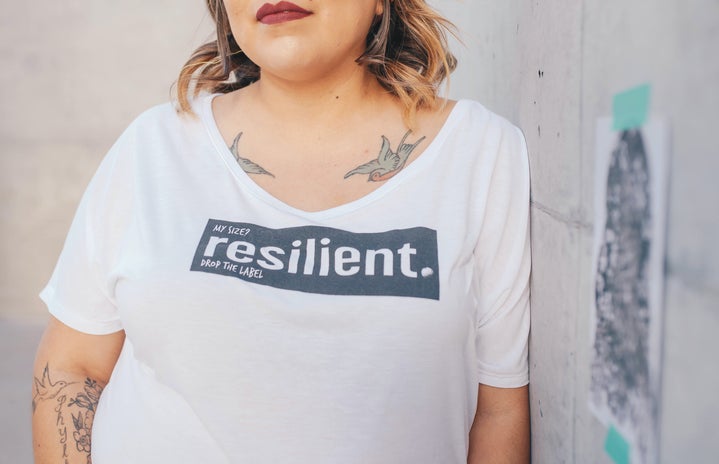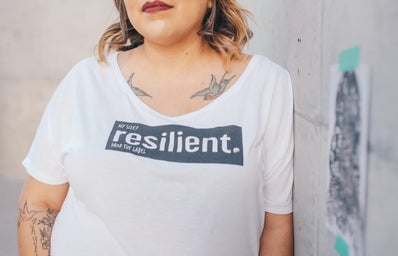If you have read any of my other articles, then you know I am a huge proponent of everyone, especially college students, getting out to vote. After all, this is the best and most accessible way to have a say in government and policies that directly affect you. Also, as a feminist I know that not even one hundred years ago, women did not have the right to vote and this was a right that was hard-earned through sweat and blood and hunger strikes. Now that I’m old enough to vote I decided to practice what I preach and vote in the May 8th election. There were definitely some obstacles in my way on my perilous journey to exercise my hard-earned rights.
First of all, I had no idea I was able to vote until a voter registration group came to the university, targeting college students, which is a great move because as of 2015, millenials (the majority of college students), have the lowest turnout rates, according to NBC. Like many other young people, I don’t have a driver’s license. I have an expired temporary permit, and it’s only useful for getting me into Score and the Interbelt and proving I exist. Luckily, I live in a state that does not require Photo ID to vote, which is a privilege millions of Americans that live in seven states are required to show, disenfranchising those who cannot afford ID or the right ID. Many states don’t allow Student IDs or if they do there are special requirements such as proving they live in the dorms which is burdened by not having a utility bill. To register to vote I only have to provide the last four digits of Social Security Number. Ohio is also a state that allows online registration which makes the process even easier than the traditional in-person or snail-mail. Unfortunately, twelve states have not modernized their process.
Now, I don’t live in Summit County, but I could have registered to vote here because Ohio law allows for college students to vote with their college residence addresses – if it’s their permanent address. I decided instead to register with my home address, but I’m lucky I had that choice. Other states prohibit college students from voting with their college residence because they don’t have evidence they live there or they don’t allow P.O. boxes, which is a federal law. This disenfranchises college students from being active in cities they live, work, spend money and volunteer. I decided to vote with an absentee ballot which Ohio allows without any restrictions, unlike the twenty states who need an excuse to vote, like a child trying to get out of school.
This process turned out to be much more complicated than I thought. First of all, the application for an absentee ballot is inexplicably not an online process, which is mind boggling to me. I had to print out my registration form and mail it in. This may seem fairly simple, but as a college student it was much more complicated than it should be. At least in Ohio, the deadline to request a ballot is three days before the election. In other states, this deadline could be much earlier and a busy person could miss it. After filling out my registration, I had to find a stamp and I went all over campus trying to figure out where you can buy a stamp – pro tip: your campus bookstore probably sells stamps. I then had to find where I could send mail on campus and then finally mailed my registration, and waited with antici…
I waited actually quite some time because my ballot didn’t arrive until the Saturday before the election. I eagerly filled out my ballot and put it in the envelope to be mailed out. One small complication, I needed my ballot postmarked. Postmarking for those who are savvier with iMessage than what basically feels like the Pony Express, is when a post office marks your envelope to prove it was sent on a certain date even when it’s scheduled to arrive days after a deadline. My ballot had to be postmarked the day before the election, so I had to make the perilous two mile journey off Akron’s campus to find a post office. Two miles doesn’t sound like much but, I don’t have a driver’s license. So, I took two buses and then walked a quarter of a mile off campus to get to the post office to be informed I needed three stamps, not just one, a fact I would not have known had I just mailed it. Also, in my opinion, it should be free to mail an absentee ballot and the registration. Yes it’s not even $2, but I shouldn’t have to pay to complete my civic duty.
This minor inconvenience may pale in comparison to the discriminatory voter ID laws, but it’s part of a bigger picture of the U.S government making voting too complicated. Thirty-two states have voter ID laws, and these laws are supposedly to enter voter fraud. Voter fraud is a huge issue in this country. Since 2000, 31 cases of voter fraud have been found. That’s 31 out of 1 billion. This is such a negligible amount of voter fraud for strict voter ID laws that turn away tens of thousands of voters in each state with these regulations and can cost states millions of dollars to implement. Even more of a problem is that these rules are blatantly racist and discriminatory. North Carolina’s recently overruled voter ID regulations were created after legislators looked at what aspects of voting like same-day registration were use disproportionately by African Americans and restricted it, and they disallowed IDs such as government employee and school IDs used primarily by African Americans. The ACLU finds that 21 million Americans do not have government-issued photo ID, it can cost up to $175 to procure the necessary documents for ID and people in rural areas may have to drive 170 miles to the nearest government office. Also, 25% of African Americans lack ID for voting. Clearly, there is a huge issue of vulnerable populations such as minorities, those who are poor and those in rural areas being disenfranchised.
My journey through the fire swamp of voting and my interactions with the R.O.U.S (rules of unjust sense) felt far too complicated, and I’m one of the lucky ones. Voting across the country needs to be better. For a country that touts itself as the one true democracy, it shouldn’t be this complicated. Voter ID laws are on blatant examples, but there’s many more covert examples. For example, elections are held on Tuesdays because people all traveled in buggies and needed time between the Sabbath and Market Day on Wednesdays to get to the election. After all, this law was put in place when African Americans, women and eighteen year old couldn’t vote. Times have changed and people are reluctant to change elections to the weekend despite 1 out of 4 people who don’t vote saying it’s because of the date because typically poorer people which are disproportionately minorities hold jobs where they can’t take time off to go vote. Evidence proves that voter turnout is boosted by online voter registration, and there should be more poll workers and equipment so people aren’t forced to wait in long two hours line to vote, especially since the New York Times reports that “minority voters are six times as likely as whites to wait longer than an hour to vote” even in same town or county. In fact, voting locations need to be closer to people’s homes. I live next to a voting location, but my voting location which was recently moved further from my house is 1.5 miles away. This may seem inconsequential but there can real effects.
When North Carolina’s now overturned voting laws were in effect, African American voters had to travel 350,000 extra miles to their nearest early voting site compared to 21,000 miles by white voters. Other suggestions to improve voter turnout include expanding early voting, have electronic automatic registration when interacting with government agencies and pre-registering seventeen year olds to vote when they turn eighteen. Online voting could also solve a lot of these issues and could help millions of Americans vote, especially the 10 million Americans who don’t speak English as their primary language and may be unable to helped at their polling place and the millions of Americans who are disabled and have trouble accessing their polling place, considering only 25% are completely accessible.
There are certainly challenges to voting, but the fact remains that it’s so important that everyone who can, needs to vote. If laws are ever going to change we need people in office who truly represent us, and if women, minorities, young people, people with disabilities and the poor don’t turn out, then there will not be true representation.
If you need help voting in Ohio there is plenty of information available online. The official voting page for Ohio is MyOhioVote.com, and there is great information about where to vote, how to vote via absentee ballot and voting for people with disabilities. You can also register to vote here and get the application for absentee ballots. CampusVoteProject.org helps students vote across the country vote. These are only two websites I have found but there are dozens more helpful websites out there. Next election day, get out and vote. If you don’t want to do it for yourself, than do it for the people who can’t.



